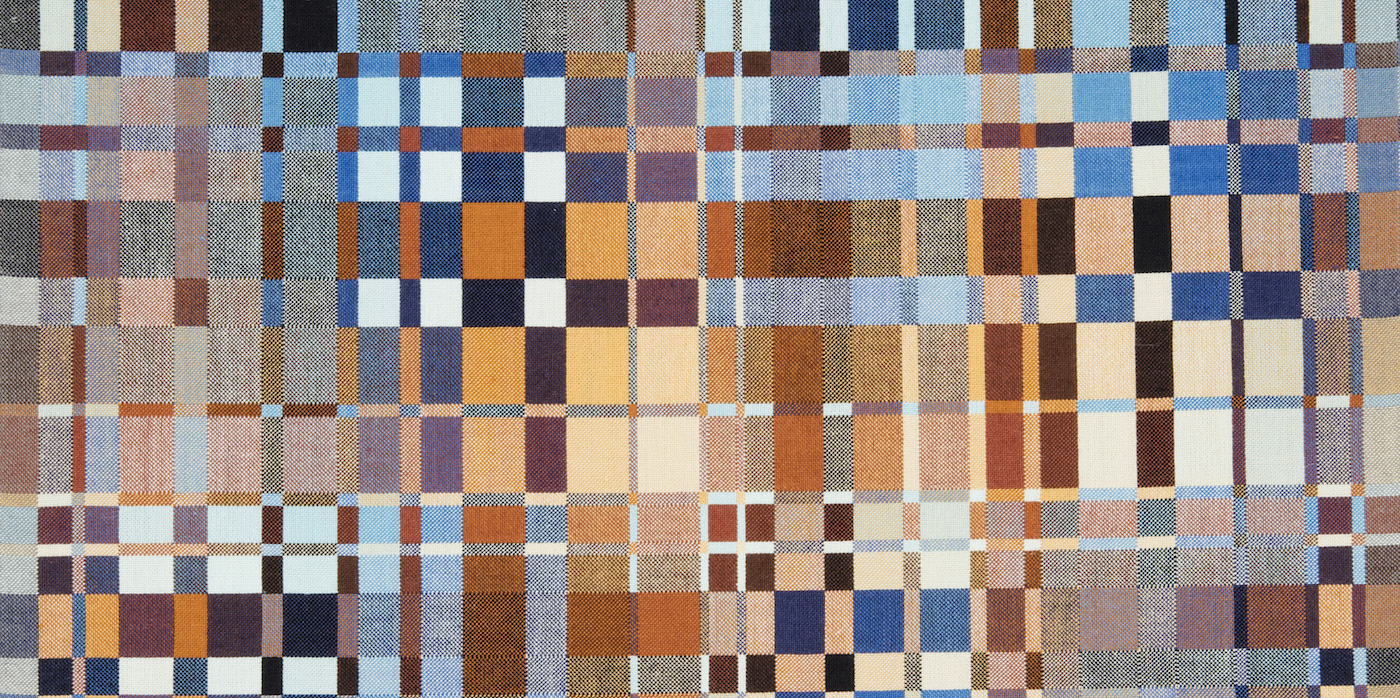Color Decoded: The Textiles of Richard Landis


Richard Landis (American, born 1931) is a master weaver who pursued a nearly lifelong investigation of pattern and color. His double-cloth textiles are complex systems of closely related full-tones and half-tones of color, organized into abstract geometries of endless variation. In Landis’s weavings, small, medium, and large rectangles and squares repeat in ever-changing order, and every possible color combination is played out both horizontally and vertically. What appears to be a random arrangement of colored squares is a balanced and controlled expression of a well-modulated palette.
A fine-art student prior to serving in the Korean War, Landis became captivated by the woven obis and kimonos on display in the shops of Kyoto while on leave in Japan. After the war ended, Landis returned to Arizona where he took his first and only weaving class. Landis chose a blue warp—the vertical element threaded into the loom—instead of the customary white for beginning weavers—and, as he wove different colors of threads (known as the weft) into his textile, became fascinated with weaving’s potential for blending and creating new colors. For the next four decades, weaving became Landis’s sole preoccupation; producing increasingly complex geometric compositions for a systematic exploration of color relationships.
Color Decoded: The Textiles of Richard Landis celebrates the recent acquisition of six of Landis’s most important works for Cooper Hewitt’s collection, installed together with three process drawings and 13 more of Landis’s textiles, and all produced between 1967 and 1995. The drawings demonstrate how Landis would calculate and visualize every permutation possible within a defined set of colors. While the actual weaving could be completed in days, it sometimes took Landis a month or more to work out the full range of tones and hues on paper, design the geometric pattern, and prepare the loom to weave the cloth. Using his preferred weave structure—double-cloth—Landis would simultaneously weave two parallel planes of fabric, a technique that allowed for the creation of the multicolored complex patterning of his textiles. The remarkable intricacy, dynamism, and luminosity found in works such as Campo di Fiori (1976), Untitled (1982), and Nines (1995) show a designer working at the height of his creative powers.
A selection of objects in the exhibition.
Warp: The vertical element of thread or yarn in woven cloth that is under tension on the loom.
Weft: The horizontal threads that interlace with the warp threads to create a structure.
Double cloth: A four-element weaving technique using two sets of warp and two sets of weft to produce two interwoven cloths, one over the other.